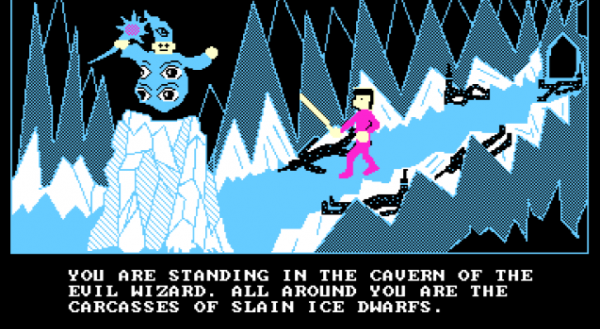- In your own words, explain the difference between a parser interactive fiction game and a choose your path interactive fiction game.
Parser and Choose Your Own Path interactive fiction games are similar except; Choose Your Own Path IF games provide a set of options the player can choose from to proceed with the story. In Parser IF games, the player tells the game what they want to do using a verb and noun, for example, “Enter Room.”
- Name an example of a parser game.
Zork – Infocom Games
- Name an example of a choose your own path game.
Lifeline – 3 Minute Games
- Why does she say interactive fiction virtually died out in the mid-1990s?
The games were limited to paper; resulting in shorter less detailed stories. Additionally, some IF games used variables to store the decisions of the player but also on paper. This required the player to commit to the work of keeping track of their, and usually other player’s, decisions.
- Why does she say poetry is an important element of interactive fiction writing? What example does she use?
By carefully choosing their words, the game’s narrators can create worlds in fewer words. Instead of explicitly providing details about the world, the player will “see” the world from the implicit details created by their question on what they’ve read.
- Why does she say that ambiguity is not only unavoidable but also necessary?
It is necessary because a game has limited memory resulting in details having to bee left out. However, these details can be filled in by the player through implicit details or from their own interpretation of the game. This brings the player further into the game creating an emotional attachment to the world created.
- What’s important about complicity?
The player will become much more emotionally involved with the story when they feel as if they made the choices in the story themselves. An example of this are Parser games, where the players feel they have an infinite amount of choices but, are steered by the game by the context of the story and what they would actually do in the situation.



